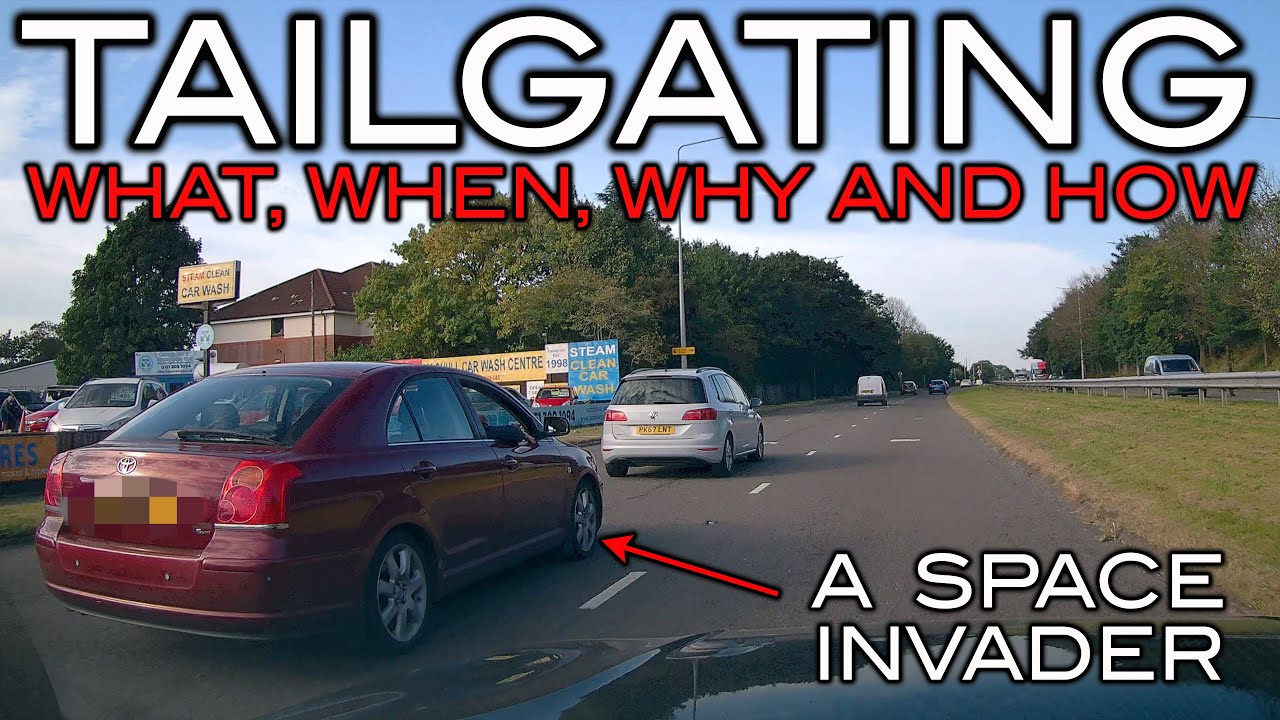
Introduction to Tailgating
Tailgating is a dangerous driving behaviour that involves driving too closely behind another vehicle. It is a common form of aggressive driving that can lead to accidents and injuries on the road. Tailgating can cause drivers to feel intimidated and pressured, leading them to make mistakes or take unnecessary risks.
According to statistics from the UK government, tailgating is a leading cause of accidents on the road. In fact, it is estimated that one in eight road accidents in the UK is caused by tailgating. These accidents can result in serious injuries or even fatalities.
It is important for drivers to deal with tailgaters safely and responsibly. This includes maintaining a safe distance from the car in front of you and avoiding sudden braking or acceleration. If you are being tailgated, you should try to move out of the way if possible or signal the driver to back off.
Understanding Why Drivers Tailgate
Tailgating is a dangerous driving behaviour that can lead to accidents and injuries on the road. Common reasons why drivers engauge in this behaviour include impatience, stress, anxiety, and driver psychology. Tailgating drivers may feel that they are in a hurry or that other drivers are not moving quickly enough.
Driver psychology also plays a role in tailgating behaviour. Some drivers may feel a sense of power or control when they tailgate others, while others may be trying to assert their dominance on the road. This behaviour can be exacerbated by stress and anxiety, which can cause drivers to become more aggressive and impatient.
The impact of stress, anxiety, and impatience on driving behaviour cannot be overstated. These factors can cause drivers to take unnecessary risks and engage in dangerous behaviours such as tailgating. It is important for drivers to recognise the signs of stress and anxiety and take steps to manage these emotions while driving.
Risks Associated with Tailgating
Tailgating is a dangerous driving behaviour that poses significant risks to both the tailgater and the driver being followed too closely. Tailgating can lead to rear-end collisions, which can cause serious injuries or even fatalities. The consequences of accidents caused by tailgating can be severe, resulting in property damage, medical bills, and legal fees.
In addition to the physical dangers of tailgating, there are also legal implications for drivers who engage in this dangerous practise. In some cases, tailgating may be considered reckless driving or aggressive driving, which can result in fines, points on your licence, or even licence suspension.
The impact of stress, anxiety, and impatience on driving behaviour cannot be overstated. These factors can cause drivers to take unnecessary risks and engage in dangerous behaviours such as tailgating. It is important for drivers to recognise the signs of stress and anxiety and take steps to manage these emotions while driving.
Defensive Driving Techniques to Avoid Tailgaters
Defensive driving techniques can be used to avoid tailgaters on the road. These techniques can help drivers maintain a safe distance from other vehicles and anticipate potential hazards or sudden stops ahead.
One of the most important defensive driving techniques is to maintain a safe following distance from the vehicle in front of you. This means leaving enough space between your car and the car ahead so that you have enough time to react in case of sudden stops or hazards.
Another important technique is to anticipate potential hazards or sudden stops ahead. This means paying attention to traffic flow and road conditions, and adjusting your speed accordingly. If you see a hazard or potential danger ahead, slow down gradually and give yourself plenty of time to react.
Using indicators early when turning or changing lanes is also an effective way to avoid tailgaters. By signalling your intentions early, you can give other drivers plenty of time to adjust their speed and position on the road.
Overall, defensive driving techniques are essential for avoiding tailgaters and staying safe on the road. By maintaining a safe distance from other vehicles, anticipating potential hazards, and using indicators early, drivers can reduce the risk of accidents caused by tailgating.
Dealing with Persistent Tailgaters Safely
When dealing with persistent tailgaters on the road, it is important to remain calm and avoid aggressive reactions. Responding in an aggressive manner can escalate the situation and increase the risk of accidents. Instead, drivers should try to slow down gradually until the tailgater backs off or change lanes if possible to let them pass safely.
Maintaining a safe distance from other vehicles and anticipating potential hazards can also help drivers avoid tailgaters. By paying attention to traffic flow and road conditions, drivers can adjust their speed accordingly and reduce the risk of accidents caused by tailgating.
Using indicators early when turning or changing lanes can also be an effective way to deal with tailgaters. By signalling your intentions early, you can give other drivers plenty of time to adjust their speed and position on the road.
Overall, defensive driving techniques are essential for dealing with persistent tailgaters safely. By staying calm and avoiding aggressive reactions, slowing down gradually until they back off or changing lanes if possible to let them pass safely, maintaining a safe distance from other vehicles, anticipating potential hazards, and using indicators early when turning or changing lanes, drivers can reduce the risk of accidents caused by tailgating.
Reporting Dangerous Drivers Who Persistently Engage In This Behaviour
When dealing with persistent tailgaters who pose a danger on the road, there may be instances where reporting the driver is necessary. Dashcam footage can be used as evidence when reporting an incident, as it provides a clear record of the behaviour of the tailgater.
It is important to remain calm and avoid aggressive reactions when reporting dangerous drivers. Contacting local authorities or police may be necessary if the tailgater poses an immediate danger on the road. The police can investigate and take appropriate action, such as issuing a fine or licence suspension.
When reporting dangerous drivers, it is important to provide as much information as possible, including the make and model of the vehicle, licence plate number, and a description of the driver. Providing dashcam footage can also help authorities identify the driver and take appropriate action.



